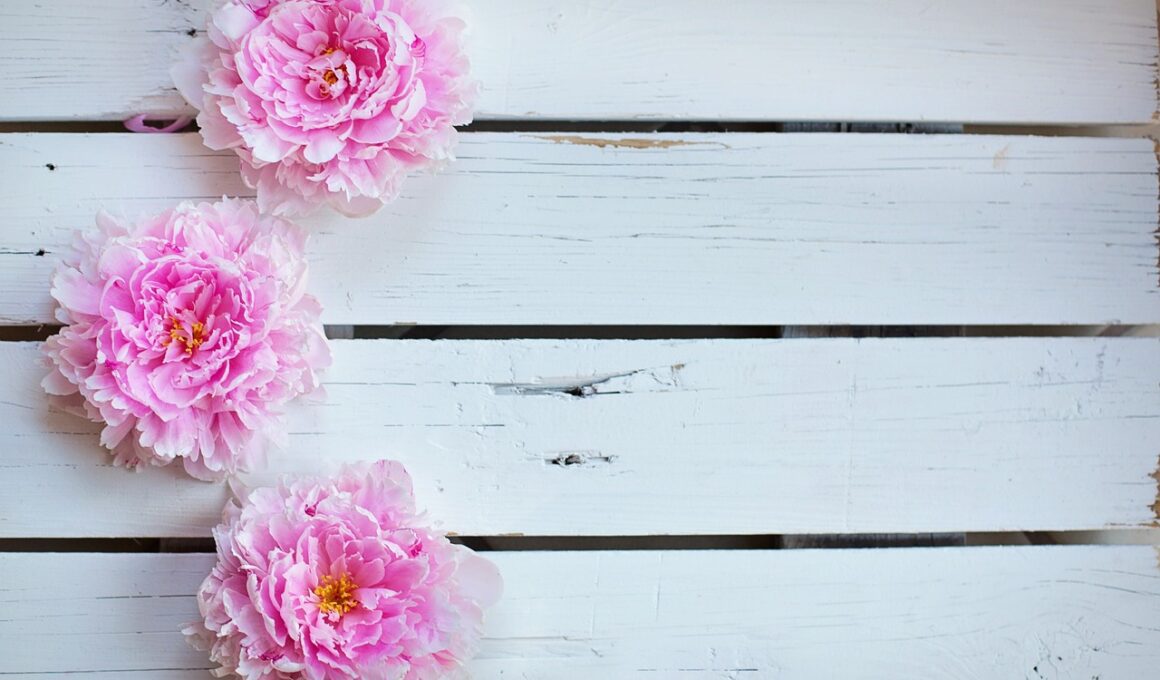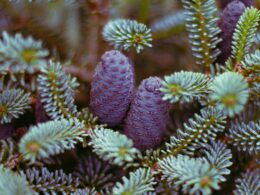If you’re a gardener, you know that taking care of your plants is a never-ending task. There’s always something to do, whether it’s watering, fertilizing, or pruning. One important task that many gardeners overlook is deadheading, especially when it comes to peonies.
Deadheading is the process of removing spent blooms from plants, and it’s an essential part of maintaining healthy, vibrant flowers. But do you know if you should deadhead your peonies? In this article, we’ll explore the world of deadheading and give you all the information you need to keep your peonies looking their best.
Peonies are a beautiful and popular flower, but they can be finicky to grow. They require specific conditions and care to thrive, and deadheading is just one part of that care. If you’re not sure whether or not to deadhead your peonies, you’re not alone. Many gardeners are confused about this task and wonder if it’s necessary.
The short answer is yes, deadheading peonies is essential for keeping them healthy and promoting new growth. But don’t worry, it’s not as complicated as it sounds. In the following sections, we’ll explain exactly why deadheading is important for peonies and show you how to do it effectively.
What is Deadheading?
By removing spent blooms from your plants, you can encourage new growth and prolong the beauty of your peony garden. This process is called deadheading, and it involves snipping off the flower head once it has wilted.
The benefits of deadheading are many, including promoting more blooms, preventing the plant from going to seed, and improving overall plant health. If you don’t deadhead your peonies, the plant will eventually stop producing new blooms and focus on producing seeds instead.
This can lead to a less attractive garden and a weaker plant. Deadheading is a simple and effective way to encourage your peonies to keep producing new blooms throughout the growing season. If you’re not a fan of deadheading, there are alternative methods to promote new growth and prolong the beauty of your peony garden.
One option is to simply leave the spent blooms on the plant, as they will eventually fall off on their own. Another option is to cut the entire stem back to the ground once all the blooms have faded. However, deadheading is the most effective way to encourage new growth and keep your peonies looking beautiful all season long.
Peonies and Deadheading
To keep your peonies blooming beautifully, make sure to remove any spent flowers as soon as they start to fade. This process, also known as deadheading, promotes the growth of more flowers and helps to prevent the plant from focusing its energy on producing seeds. Deadheading your peonies is an easy and effective way to keep them looking their best.
Peonies are a popular garden plant due to their stunning blooms, but without proper care, they can quickly become overgrown and unmanageable. By pruning your peonies regularly, you can keep them healthy and encourage them to produce more flowers.
Deadheading is a crucial part of this process, as it helps to prevent the plant from becoming too large and unwieldy. The benefits of deadheading your peonies are numerous. Not only does it promote the growth of more flowers, but it also helps to prevent disease and pests from taking hold.
Additionally, deadheading can help to extend the blooming season of your peonies, allowing you to enjoy their beauty for longer. So if you want to keep your peonies looking their best, make sure to deadhead them regularly.
How to Deadhead Peonies
If you want your peonies to keep blooming beautifully, it’s important to know how to deadhead them. Deadheading is the process of removing spent blooms from the plant. This technique encourages the peony to produce more flowers and improves the overall appearance of the plant.
To deadhead peonies, wait until the flowers have bloomed and the petals have started to wilt. Using a pair of pruning shears, cut the stem just below the spent bloom. Make sure to cut the stem at an angle, as this will allow water to drain off the cut surface and prevent disease. If you’re not comfortable using pruning shears, you can also pinch off the spent blooms with your fingers.
Deadheading is not only important for the health of your peonies, but it also improves the aesthetics of your garden. Removing spent blooms keeps the plant looking neat and tidy and allows the remaining flowers to take center stage.
So, if you want your peonies to continue blooming throughout the summer, make sure to deadhead them regularly.
Other Peony Maintenance Tips
Maintaining healthy and beautiful peonies involves more than just deadheading, so let’s explore some other helpful tips.
One important aspect of peony maintenance is proper pruning techniques. After the blooming season ends, it’s a good idea to cut back any dead or damaged stems to prevent disease from spreading. You can also trim back any branches that are crossing or rubbing against each other.
Another key factor in peony care is disease prevention. Peonies are susceptible to fungal diseases such as botrytis and powdery mildew, so it’s important to keep the plants healthy and dry. Make sure to plant your peonies in well-draining soil and provide them with adequate sunlight and air circulation. You can also use a fungicide spray as a preventative measure.
To further promote healthy growth and vibrant blooms, consider fertilizing your peonies with a balanced fertilizer in the early spring. Be sure to follow the manufacturer’s instructions and avoid over-fertilizing, as this can lead to weak stems and fewer blooms.
With these simple maintenance tips, your peonies are sure to thrive and bring beauty to your garden year after year.
Conclusion
With proper pruning techniques, disease prevention, and fertilization, your peonies will continue to bloom beautifully year after year. However, deadheading is not necessary for the health of the plant. Deadheading is the process of removing spent blooms from the plant, but leaving them on can add to the garden aesthetics. The dried blooms can add texture and interest to the plant, and the birds might come to feed on the seeds.
Plant growth is important to consider when pruning your peonies. Too much pruning can stunt the growth of the plant, while too little can cause the plant to become unruly and unmanageable. When pruning, always make sure to cut just above a leaf node or bud to encourage new growth.
Fertilizing your plant regularly with a balanced fertilizer can also promote healthy growth and beautiful blooms. In conclusion, maintaining the health and beauty of your peonies can be achieved through proper pruning techniques, disease prevention, and fertilization. Deadheading is not necessary for the health of the plant, and leaving the spent blooms can add to the garden aesthetics. Remember to also consider plant growth when pruning and fertilizing your peonies to ensure they continue to bloom beautifully year after year.
Frequently Asked Questions
How often should I deadhead my peonies?
To keep your peonies looking their best, it’s important to deadhead them regularly. The frequency of deadheading will depend on the variety of peony you have, but generally, you should remove spent blooms as soon as they start to wilt. This will encourage your peony to produce more flowers and also prevent it from wasting energy on producing seeds.
Leaving spent blooms on your peony can also attract pests and diseases. However, if you’re not concerned about maximizing your peony’s bloom potential, leaving spent blooms can have benefits. The wilted blooms can provide a natural mulch for the plant and also add visual interest to your garden.
Ultimately, the decision to deadhead or not will depend on your personal preference and gardening goals.
Can I deadhead my peonies during the blooming season?
If you want your peonies to bloom beautifully throughout the season, then deadheading them is a great idea. Deadheading is the act of removing the spent blooms from your plants, and it has many benefits.
By removing the dead flowers, you’re preventing the plant from wasting energy on seed production, which allows it to focus on producing more blooms. It also keeps the plant looking neat and tidy, and encourages it to produce more lateral shoots.
While deadheading can be done throughout the blooming season, it’s important to note that there are alternative pruning methods you can use if you prefer not to remove the spent blooms. For instance, you can cut the entire stem down to the ground after the blooming season is over. This will encourage the plant to produce new growth, which will result in more blooms the following year.
What is the best tool to use for deadheading peonies?
The key to successful pruning of peonies is timing. The best time to deadhead your peonies is after their blooms have started to fade. This will encourage the plant to put more energy into root development rather than seed production.
When it comes to tools, the best option is a pair of sharp, clean pruning shears. Make sure to cut the stem just above the first set of leaves. This will help the plant to maintain its shape and encourage healthy growth.
It’s important to remember that over-pruning can be harmful to your peonies, so stick to light pruning techniques and avoid cutting back more than one-third of the plant at a time.
By following these simple tips, you can help your peonies thrive and enjoy a beautiful bloom season year after year.
Is deadheading the only maintenance task required for peonies?
To ensure your peonies remain healthy and beautiful, deadheading is not the only maintenance task required. Pruning techniques are also necessary to remove any damaged or diseased parts of the plant and promote new growth.
Additionally, pest control is crucial to prevent insects from damaging the plant. Regularly inspect your peonies for signs of pests and take appropriate measures to eliminate them.
By following these simple steps, you can keep your peonies thriving and enjoy their stunning blooms for years to come.
Can deadheading affect the growth of my peonies in the following season?
To ensure the growth of your peonies in the following season, it’s important to use proper pruning techniques and provide seasonal care. Deadheading, or the removal of spent blooms, is just one aspect of this care.
While deadheading can promote continued blooming throughout the current season, it also encourages the growth of new shoots and foliage, which can lead to stronger peony plants in the future. However, it’s important to not over-prune or cut back too aggressively, as this can stunt growth and decrease the number of blooms in the following season.
By incorporating deadheading into your overall seasonal care routine, you can help ensure the long-term health and vibrancy of your peonies.
Conclusion
Now that you know what deadheading is and how it can benefit your peonies, it’s time to put this knowledge into practice.
Remember to always deadhead your peonies after they bloom to encourage further growth and prevent seed production. Don’t worry, deadheading is a simple process that won’t take much of your time.
In addition to deadheading, be sure to provide your peonies with enough sunlight, water, and nutrients. Keep an eye out for pests and diseases, and address them promptly if necessary.
With a little bit of care and attention, your peonies will continue to thrive and provide you with beautiful blooms year after year.








